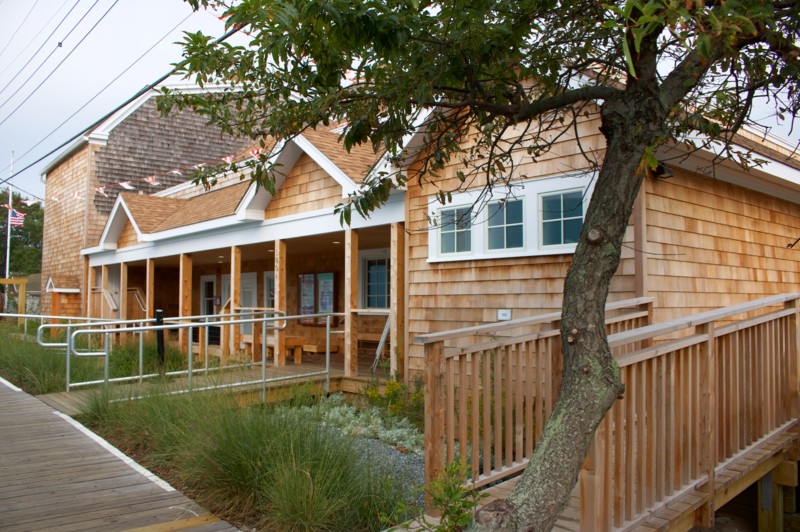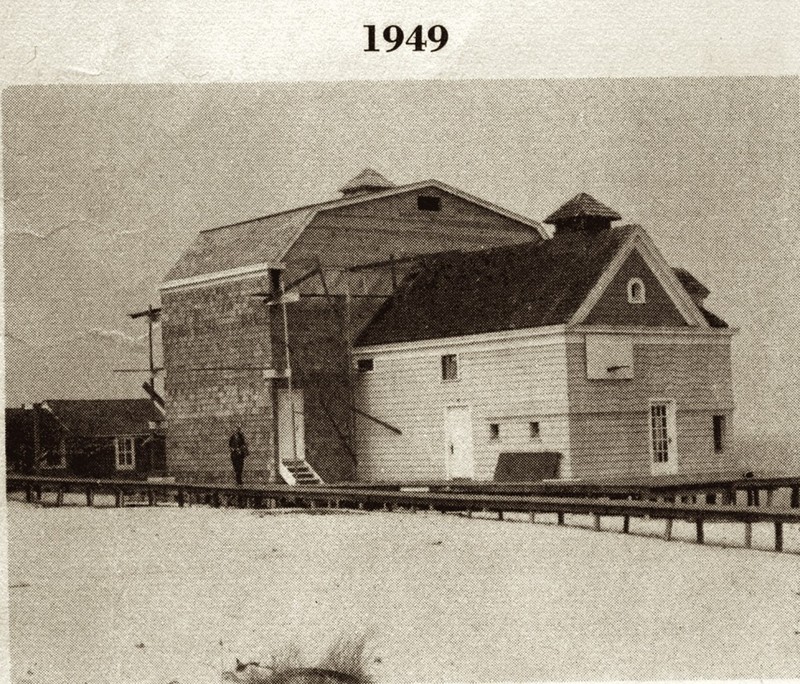Cherry Grove Community House & Theatre
Introduction
Text-to-speech Audio
Images
The community house and Theatre as it stands today.

The community house and theatre in 1949.

Backstory and Context
Text-to-speech Audio
The Cherry Grove Community House and Theatre is comprised of a carriage house and theatre. The carriage house was floated across to Fire Island in 1944, sent for use by the Cherry Grove Property Owners Association. The group had organized in the same year and had ordered the home after realizing the areas increased use as a resort area. The group collected multiple organizations under one name with some of the committees involved being the Fire Prevention, Dock & Boardwalk, and Finances and Art Projects. Some of the work they provided for the community were extending boardwalks and funding construction for public docks.
The Art Project was formed in 1948 with the desire to entertain the community. Their first production, The Cherry Grove Follies of 1948, was performed in the community house in a very short time frame. The turnout for this production was very profitable leading to the Property Owners Association deciding to construct a theatre alongside the community house.
The Art Project has continued to conduct performances since its establishment. From this Cherry Grove became known for an artistic and LGBT community. The area became a haven for queer individuals to express themselves with the theatre as one outlet for this and others following suit. It was due to this notoriety that raids were frequently held on the island. Examples of this involved individuals being arrested for wearing clothes that were not deemed of their sex, and nude swimming. The Art project Board warned the community of these raids with some theatre directors and staff removing their names from scripts or using pen names.
These raids continued through the 50s and 60s. In 1968 The Property Owners Association working with The Mattachine Society, who was one of the earliest gay rights organizations, employed Lawyer Benedict P Venturo. He defended homosexual individuals by stating they were harming no one with their consensual acts, the police were those who disturbed the peace. The raids stopped around this time with the following year involving Stonewall riots.
As time passed the Property Owners Association’s organizations had changed. The once volunteer-led projects had become non-profit, with their exploits categorized under community service. In 2013 the Community House and Theatre were placed on the National Register of Historic Places. Its significance for placement was listed under shaping queer culture specifically in the pre-stonewall era.
Sources
2. National Register of Historic Places Registration Form. National Park Service. Accessed April 26, 2019. https://www.nps.gov/nr/feature/places/pdfs/13000373.pdf.
3. Photo of Old Community House and Theatre. The Gay Lesbian Review. Accessed May 3, 2019. https://glreview.org/article/americas-first-gay-town/.
